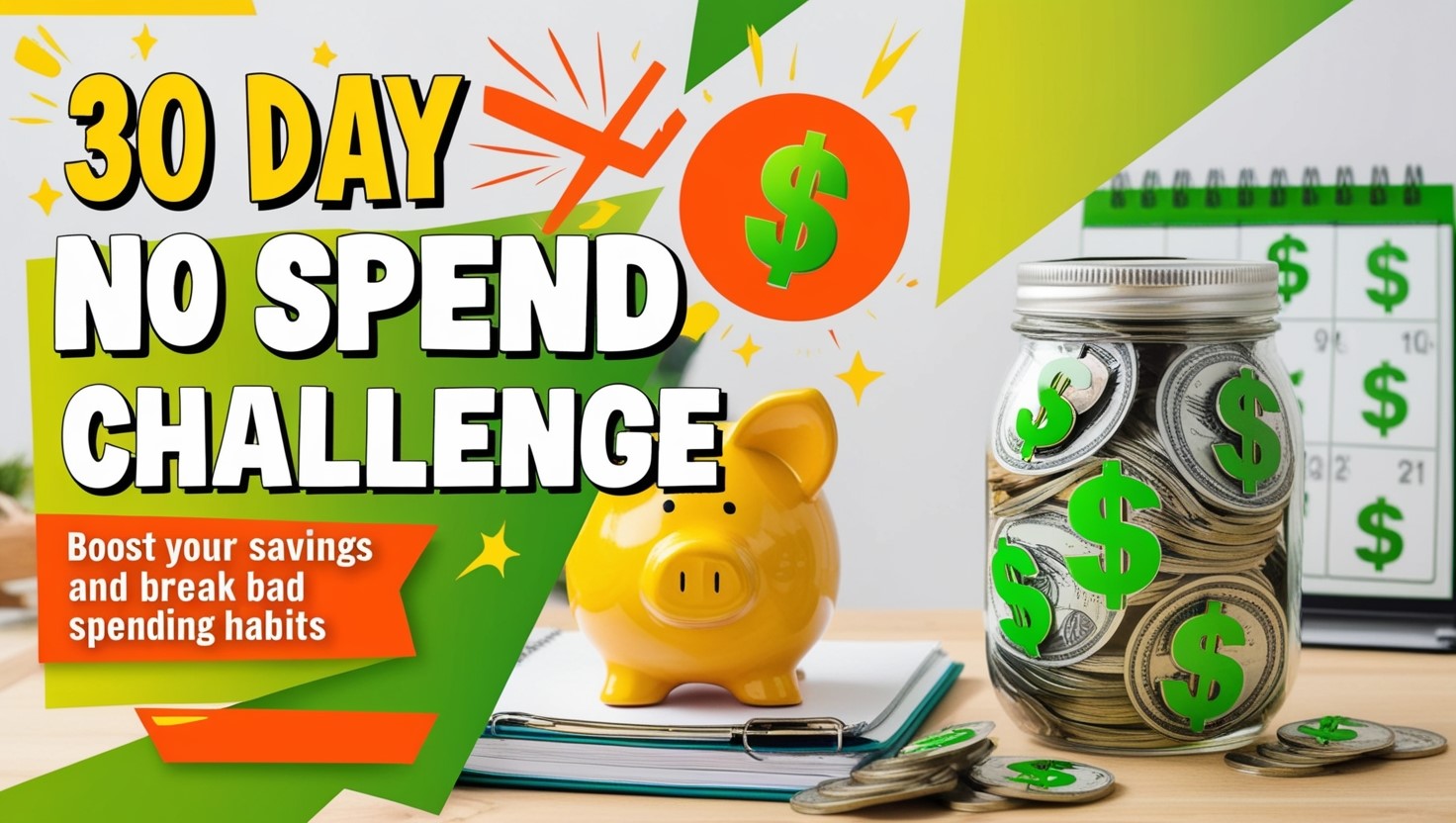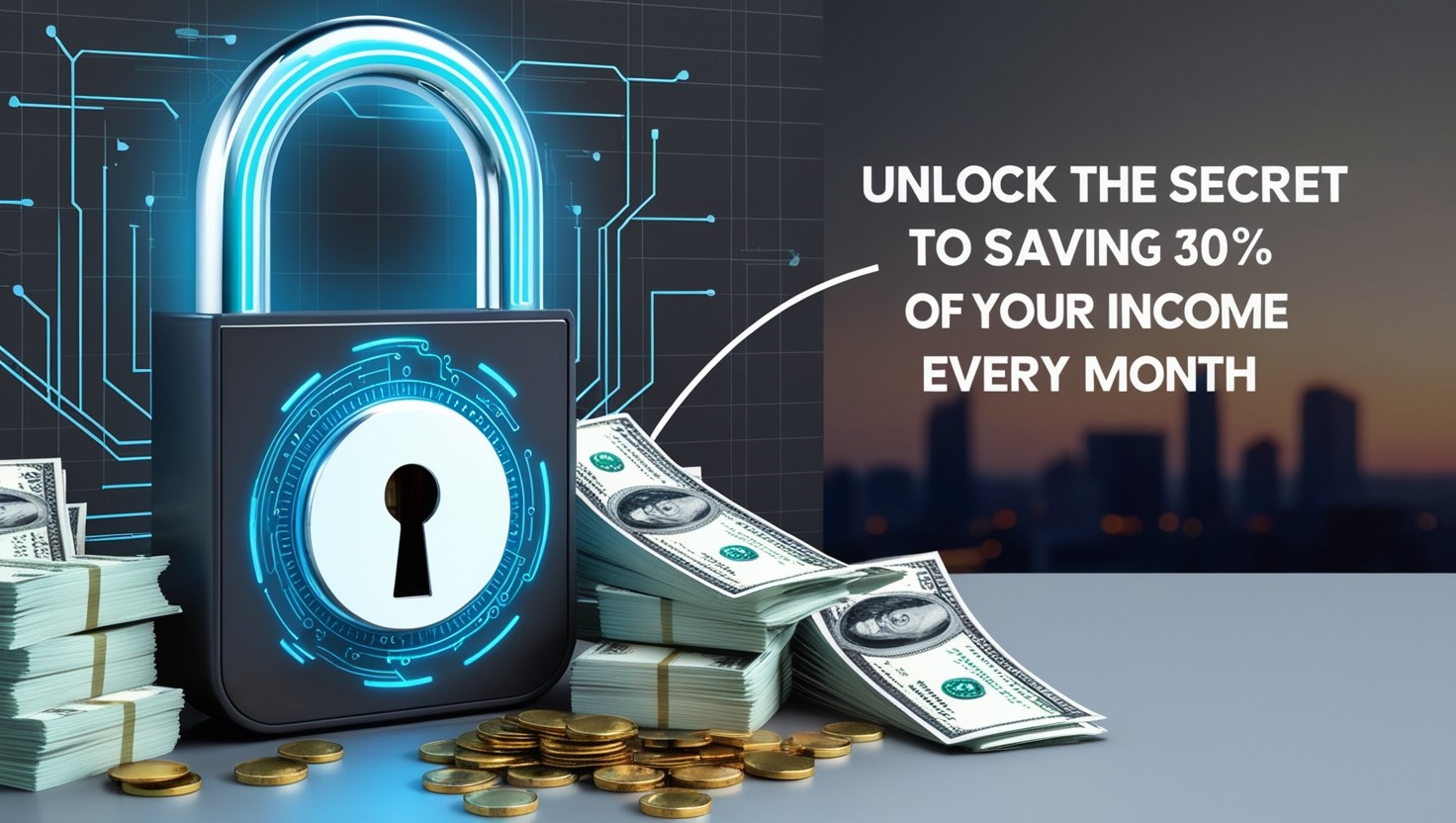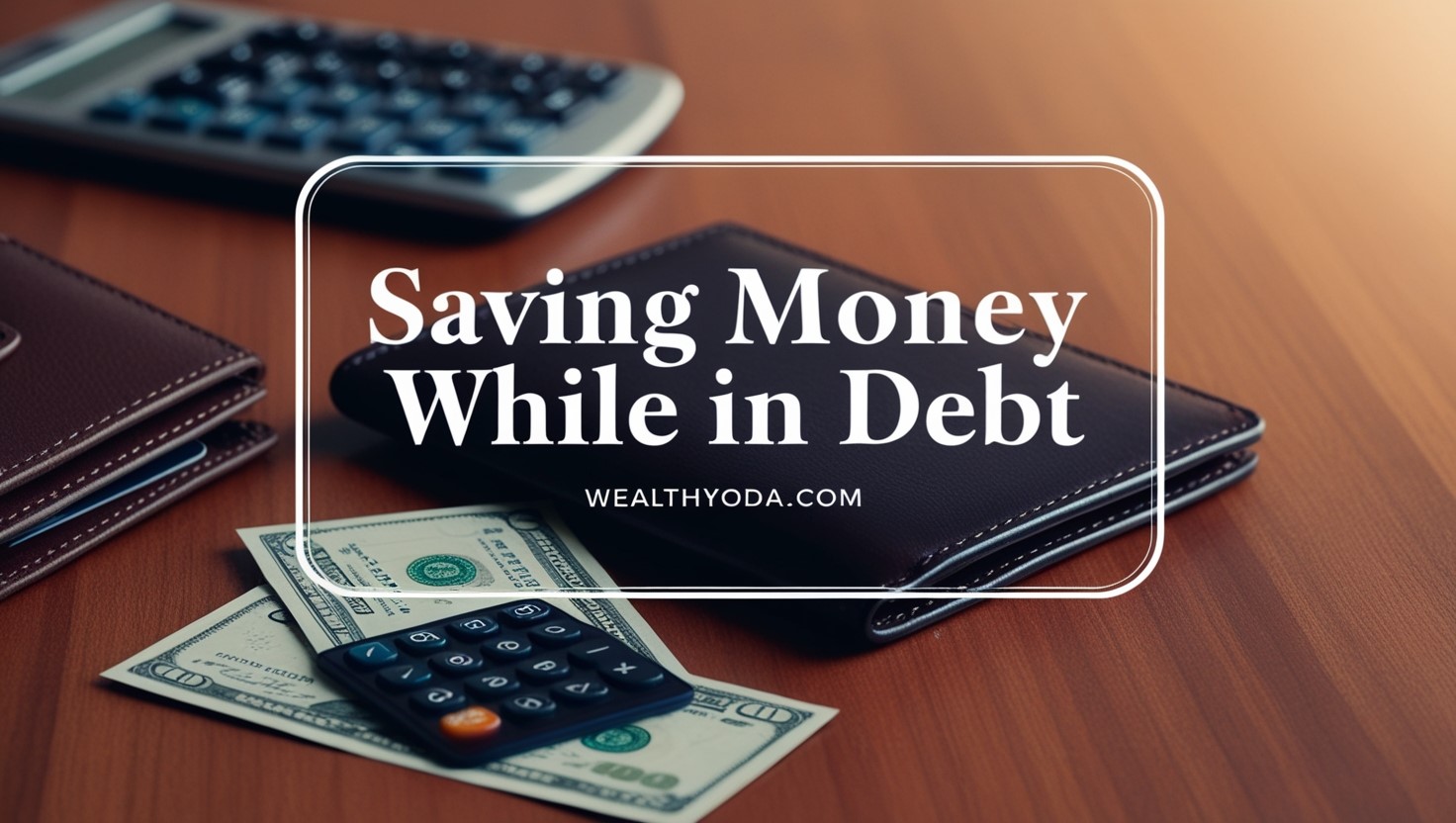Breaking bad money habits isn’t easy, especially when spending has become part of your daily routine. But what if you could hit the reset button on your finances? The 30 Day No Spend Challenge is a simple but powerful way to do just that. By committing to a month of cutting out non-essential spending, you can start to shift your mindset, take control of your finances, and save more than you might think.
The beauty of this challenge lies in its simplicity—no need for complicated budgeting apps or fancy tools. It’s all about getting back to basics and learning to live with what you already have. Whether you’re looking to break free from impulse buys, save for a bigger goal, or just reset your spending habits, this guide will walk you through how to succeed at a no-spend month and make it an eye-opening experience. Let’s take the first step toward a healthier relationship with money, one day at a time.
What is the 30 Day No Spend Challenge?
The 30 Day No Spend Challenge is exactly what it sounds like: a commitment to avoiding any unnecessary spending for 30 days. It’s a challenge designed to help you become more mindful of your money, break bad spending habits, and reset your financial mindset. By cutting out non-essential purchases—things like takeout, clothes, entertainment, and impulse buys—you allow yourself to focus only on what truly matters, like groceries, bills, and other essentials.
At first glance, this might sound extreme or difficult, but the goal isn’t to deprive yourself. Instead, it’s about creating a temporary boundary that helps you reevaluate your relationship with money. Think of it as a way to hit pause on your usual spending habits, giving yourself the space to reflect on how much you really need versus how much you buy out of convenience or habit.
Throughout the month, you’ll notice not only how much money you’re saving, but also how your perspective on spending begins to shift. Little things that once felt like necessities—like grabbing a daily coffee or buying a new gadget—may start to seem less important. The challenge gives you a fresh start, allowing you to see where your money goes and, more importantly, where it should go in the future.
The best part? It’s flexible. You can tailor the challenge to fit your life. Some people might aim to cut out all non-essential spending, while others might focus on one particular area they struggle with, like dining out or online shopping. No matter how you approach it, the goal is the same: to gain more control over your spending and build healthier financial habits that last long after the 30 days are over.
Benefits of a No Spend Challenge
The 30 Day No Spend Challenge is more than just a way to save money—it’s an opportunity to completely transform the way you think about spending. One of the most obvious benefits is the immediate boost to your savings. By cutting out non-essential purchases, you’ll quickly see how much you can hold onto when you’re not constantly giving in to impulse buys or convenience spending. Even small amounts add up over time, and by the end of the month, you’ll likely be surprised by how much you’ve managed to save.
But the financial benefits go far beyond just putting more money in your bank account. The challenge helps you develop a deeper understanding of your spending habits. It’s easy to fall into a routine of buying things without thinking, whether it’s grabbing a coffee on the way to work or ordering takeout because you’re too tired to cook. This challenge forces you to pause and consider every purchase, which helps you distinguish between true needs and momentary wants. You start to see patterns in your spending that you might not have noticed before, giving you the insight to make lasting changes.
Beyond the financial gains, the No Spend Challenge also has a way of bringing creativity into your life. When you’re not relying on buying things to solve problems, you start to find new ways to enjoy yourself and meet your needs. Whether it’s learning to cook more meals at home, finding free activities to do with friends, or rediscovering hobbies you love, the challenge pushes you to be resourceful. This shift in mindset can carry on long after the 30 days are up, helping you live a more intentional, less consumer-driven life.
Most importantly, the challenge builds discipline and self-awareness. It teaches you to be more mindful of your money, which is a skill that can benefit every part of your financial life. Whether you’re looking to pay off debt, save for a big goal, or simply feel more in control of your finances, the No Spend Challenge offers a powerful reset that can help you get there
Preparing for the No Spend Challenge
Before diving into the 30 Day No Spend Challenge, a little preparation can make all the difference in your success. This isn’t just about flipping a switch and suddenly stopping all spending—it’s about setting yourself up for a smooth, manageable journey. Taking the time to plan ahead can help you avoid the stress of last-minute decisions and ensure that you stay on track without feeling overwhelmed.
First, take a look at your finances and identify your essential expenses. These are the non-negotiables like rent or mortgage, utility bills, groceries, and transportation. Knowing what you have to spend money on helps you see where the boundaries are for the challenge. It also lets you budget more effectively for those necessary expenses, so you’re not scrambling mid-month to cover the basics.
Next, consider what typically tempts you into unnecessary spending. Are you an online shopper who loves a quick deal? Do you find yourself grabbing
Setting Rules for Your Challenge
One of the most important steps in a successful 30 Day No Spend Challenge is setting clear, personalized rules that fit your lifestyle. The challenge isn’t about living in deprivation; it’s about creating boundaries that help you focus on what truly matters when it comes to spending. By defining what “no spend” means for you, you set yourself up for success with realistic expectations and clear guidelines to follow.
Start by deciding what’s off-limits. For most people, this will include things like dining out, entertainment expenses, unnecessary shopping, and impulse purchases. Take a look at your spending habits and think about where your money tends to disappear without you even realizing it. For some, it might be daily coffee runs, while for others it could be frequent online shopping. These are the areas you want to focus on during the challenge.
Next, outline what is considered essential and allowed during the challenge. This will include things like rent, groceries, utilities, and transportation. You may also want to allow for certain social or health-related expenses, like buying medication or attending a pre-planned event. It’s important to be honest with yourself about what’s necessary and what isn’t—this isn’t a time to deprive yourself of essentials, but rather to limit indulgences that add up over time.
You can also decide if you want to include a “cheat day” or set a small budget for unexpected expenses. Some people find it helpful to give themselves a little flexibility to prevent burnout. However, it’s crucial to keep these exceptions very specific and avoid using them as an excuse to slip back into old habits.
Finally, consider writing your rules down. Having a clear list of do’s and don’ts for the month can help you stay accountable and focused. By taking the time to set these personalized rules, you’ll be more likely to stick with the challenge and see meaningful results that last beyond just the 30 days.
Tips to Help You Succeed During the Challenge
Making it through a 30 Day No Spend Challenge can be tough, but with the right mindset and a few key strategies, it becomes much easier—and even enjoyable. Whether you’re trying this for the first time or just need a little extra motivation, these tips can help you stay focused and make the most of your challenge.
1. Create a Budget to Track Your Spending Even though you’re cutting back on non-essential spending, it’s still important to keep an eye on where your money is going. Track your essential expenses like groceries, utilities, and rent, so you stay on top of your finances. Having a clear picture of your spending can also be motivating as you see how much you’re saving. It can be as simple as a notebook or an app that helps you monitor your progress without overcomplicating things.
2. Find Free Activities and Entertainment One of the hardest parts of the No Spend Challenge can be figuring out how to stay entertained without spending money. The good news? There are tons of free activities to enjoy. Explore local parks, get back into a hobby you’ve been neglecting, dive into a book you’ve been meaning to read, or challenge yourself to cook creative meals with what’s already in your pantry. Shifting your focus from spending money to enjoying life’s simple pleasures can be surprisingly satisfying.
3. Meal Prep and Avoid Eating Out If dining out or grabbing takeout is one of your biggest spending habits, meal prepping can be a lifesaver during the challenge. Plan your meals ahead of time, and try to cook at home as much as possible. It doesn’t have to be gourmet—simple meals will do the trick. Plus, meal prepping can help you avoid the temptation of ordering in after a long day. It saves both time and money.
4. Remove Temptation If online shopping is your weakness, try unsubscribing from promotional emails and avoiding browsing your favorite online stores. If you tend to make impulse buys at certain stores, skip those trips altogether. The fewer temptations you face, the easier it will be to stay on track. It might be helpful to remind yourself why you’re doing the challenge whenever temptation strikes—staying connected to your goals can help you push through.
5. Find Support and Stay Accountable It’s always easier to stick to something when you have someone cheering you on. Consider getting a friend or family member to join you in the challenge, or share your progress on social media or with a trusted group. Having a support system can make a huge difference when motivation starts to dip, and it’s a fun way to stay accountable and exchange ideas.
By incorporating these tips, you’ll not only survive the No Spend Challenge but thrive in it, learning more about yourself and your spending habits along the way. Small changes can make a big impact, and these strategies will help you stay focused and succeed through all 30 days.
Common Obstacles and How to Overcome Them
No challenge comes without its bumps in the road, and the 30 Day No Spend Challenge is no exception. But knowing what obstacles you might face—and having a plan to overcome them—can make all the difference in helping you stay committed and reach your goal. Here are a few of the most common hurdles and how you can tackle them head-on.
1. Emotional Spending Many of us turn to shopping when we’re stressed, bored, or looking for a quick pick-me-up. Emotional spending can sneak in during moments of weakness, making it harder to stick to the no-spend rules. The key to overcoming this is recognizing those emotional triggers before they lead to spending. Instead of shopping, find healthier ways to cope with emotions—whether it’s going for a walk, calling a friend, or journaling. The more you practice, the better you’ll get at finding comfort without reaching for your wallet.
2. Peer Pressure Sometimes the people around us can unintentionally derail our no-spend efforts. Friends may invite you out to dinner, or a coworker might suggest grabbing coffee. While it’s hard to say no, explaining your challenge can help others understand why you’re passing on certain activities for the month. You don’t need to make it a big deal—just a casual, “I’m doing a no-spend challenge this month, but I’d love to hang out in a different way” can work wonders. You might even inspire others to join you in the challenge!
3. The “Just One Small Thing” Mentality It’s easy to justify small purchases with the thought, “It’s just one coffee,” or “This small item won’t hurt.” But those little buys can quickly add up and derail your progress. When faced with the temptation of small purchases, remind yourself of your bigger goal. Every time you resist an impulse buy, you’re building the discipline that will help you achieve long-term financial success. If you’re really struggling, wait 24 hours before making any purchase—that waiting period often helps the desire fade.
4. Unexpected Expenses Life doesn’t always go according to plan, and sometimes unexpected expenses pop up. Whether it’s a medical bill, car repair, or something else you didn’t anticipate, these moments can feel like they’re throwing your challenge off track. The key here is flexibility. If an emergency arises, handle it without guilt—it’s okay to address real needs when they happen. The challenge isn’t about perfection, but progress. Just get back on track as soon as possible, and don’t let one hiccup discourage you from continuing the challenge.
5. Loss of Motivation Sticking to a 30-day challenge can feel long, and it’s normal to hit a slump where motivation starts to wane. When this happens, revisit the reasons why you started. Are you hoping to save more? Break free from unnecessary spending habits? Achieve a specific financial goal? Keeping your “why” front and center can reignite your determination. Additionally, consider rewarding yourself with non-monetary treats like a relaxing evening or a fun, no-cost activity when you reach certain milestones throughout the month.
By anticipating these obstacles and having strategies to overcome them, you’ll be better equipped to tackle the 30 Day No Spend Challenge. Remember, the journey isn’t about perfection—it’s about making progress and learning more about your spending habits along the way. With a little persistence and patience, you’ll come out the other side with more savings and a healthier approach to your finances.
Reflecting on the 30-Day Experience
Reaching the end of the 30 Day No Spend Challenge is a moment of accomplishment, but it’s also a chance to reflect on what the experience has taught you. The real value of the challenge lies not just in the money you’ve saved, but in the insights you’ve gained about your relationship with spending. Taking time to look back on these lessons can help you carry the benefits forward and make lasting changes in your financial habits.
Start by reviewing your spending patterns over the past month. How much did you manage to save compared to a typical month? More importantly, where did you find the most success in cutting back? Perhaps you realized that the daily coffees or impulse purchases weren’t as essential as you once thought. Reflect on how freeing it felt to say “no” to unnecessary expenses and how that affected your overall mindset. Did you feel more in control of your money? Did you discover creative ways to enjoy yourself without spending?
Next, think about the challenges you faced. Were there moments when you felt tempted to give in or struggled to stick to your plan? Reflect on how you handled those situations and what you could do differently next time. This isn’t about being hard on yourself—every challenge brings valuable lessons. If you had slip-ups along the way, that’s okay. What matters most is that you made an effort to be more mindful of your spending and took steps toward improving your financial habits.
One of the most powerful parts of the reflection process is recognizing how your mindset has shifted. The challenge likely made you more aware of your needs versus your wants, helping you see how much of your spending was driven by habit or convenience rather than necessity. This awareness is something you can carry with you long after the challenge is over, allowing you to make more intentional choices with your money.
As you reflect, also think about how you want to apply what you’ve learned going forward. Maybe the challenge has inspired you to implement regular “no spend” days or weeks to keep your spending in check. Perhaps you’ve realized the importance of setting clearer financial goals or maintaining a stricter budget. Whatever the case, use this reflection period to create a plan for the future. The 30-day challenge was just the beginning of a journey toward better money habits, and what you do next is just as important as what you’ve already achieved.
In the end, reflecting on your 30-day experience helps solidify the progress you’ve made and reminds you of the control you now have over your spending. It’s not just about saving money for one month—it’s about building a mindset that will help you manage your finances more effectively for years to come.
Life After the No Spend Challenge: Building Better Habits
Completing the 30 Day No Spend Challenge is a big achievement, but the real work starts after the challenge ends. This is when you have the opportunity to take everything you’ve learned and apply it to your daily life, building better habits that will stick with you for the long haul. The goal isn’t to return to old spending patterns but to use this fresh perspective to manage your money more intentionally going forward.
The first step is to assess the new habits you formed during the challenge. Maybe you found that you can go without impulse purchases or discovered how enjoyable free activities can be. Perhaps you realized that cooking at home instead of dining out saved you not just money, but also time. Take these insights and find ways to incorporate them into your routine. It could mean scheduling regular “no-spend” days or weeks each month or continuing to track your spending with the same mindfulness you developed during the challenge.
Another key part of life after the no-spend challenge is goal-setting. Now that you’ve seen what you’re capable of saving, it’s time to focus on what you want to do with that extra money. Do you want to build an emergency fund, pay off debt, or save for a big-ticket item like a vacation or a new car? Having a clear financial goal in mind will help you stay motivated and prevent you from falling back into old habits. It’s much easier to say no to unnecessary spending when you know what you’re saving for.
One of the most important lessons from the challenge is learning to differentiate between needs and wants. Keep this lesson front and center as you move forward. Every purchase doesn’t have to be denied, but each one should be considered. Ask yourself whether a particular item or experience is truly necessary, or if it’s something that can wait. This simple habit of pausing and reflecting before spending can make a huge difference in how you manage your money.
Lastly, be kind to yourself. No one is perfect, and there will be times when you slip up or indulge in a little retail therapy. The key is not to let one setback derail your progress. Treat your finances like any other area of self-improvement—it’s a journey, not a race. Celebrate your successes, learn from your challenges, and continue striving to make smart, intentional financial choices.
Life after the no-spend challenge is about more than just maintaining the habits you’ve built—it’s about creating a new mindset that will serve you well for years to come. By being thoughtful about your spending and setting clear financial goals, you’ll find that your relationship with money becomes healthier, more sustainable, and ultimately more rewarding. You’ve already proven you can go 30 days without unnecessary spending; now it’s time to build on that momentum and create a financially secure future.
Final Thoughts
The 30 Day No Spend Challenge is more than just a financial experiment—it’s a powerful way to reset your relationship with money. By committing to 30 days of cutting out unnecessary expenses, you give yourself the chance to pause, reflect, and truly understand where your money goes. It’s not just about saving more (though that’s a great perk!), but about gaining control over your finances and building habits that will last long after the challenge is over.
Throughout the challenge, you likely discovered how small, everyday purchases add up over time. You may have realized how often you buy things out of habit, convenience, or emotion. But by breaking those patterns, you’ve gained something even more valuable than the dollars you saved—you’ve gained a sense of empowerment. You now know that you can live with less, be more resourceful, and make more mindful choices when it comes to spending.
As you move forward, remember that the lessons you’ve learned don’t have to end with the challenge. The habits you’ve built—whether it’s meal prepping, choosing free activities, or simply being more intentional with your purchases—can continue to shape your financial future. The real success of this challenge isn’t just surviving the 30 days; it’s taking those habits and turning them into a new way of living. You’ve proven to yourself that you don’t need to rely on constant spending to find satisfaction, and that’s a lesson that will serve you well for years to come.
The journey doesn’t stop here. Whether you decide to take on more no-spend challenges in the future or simply incorporate regular “no spend” days into your routine, the goal is to keep building on the progress you’ve made. Every step you take toward being more mindful of your money is a step toward financial freedom. So take pride in what you’ve accomplished, and remember: small, consistent changes can lead to big, lasting results. You’ve already taken the first step, and the path to better financial habits is yours to continue.



